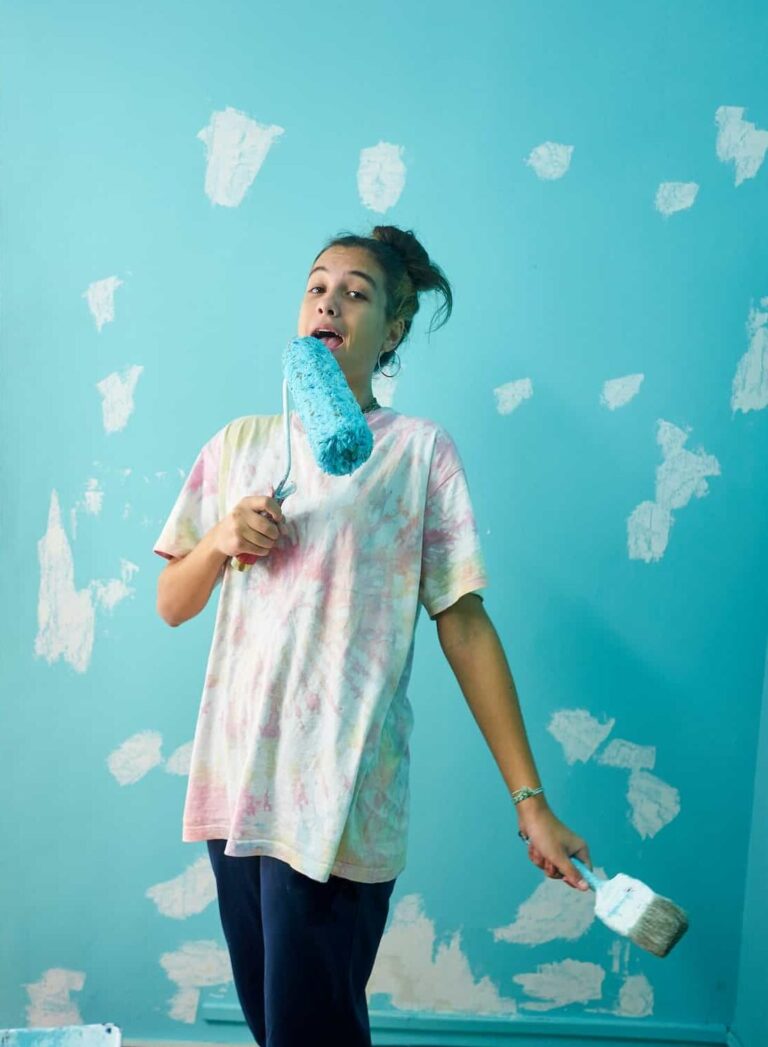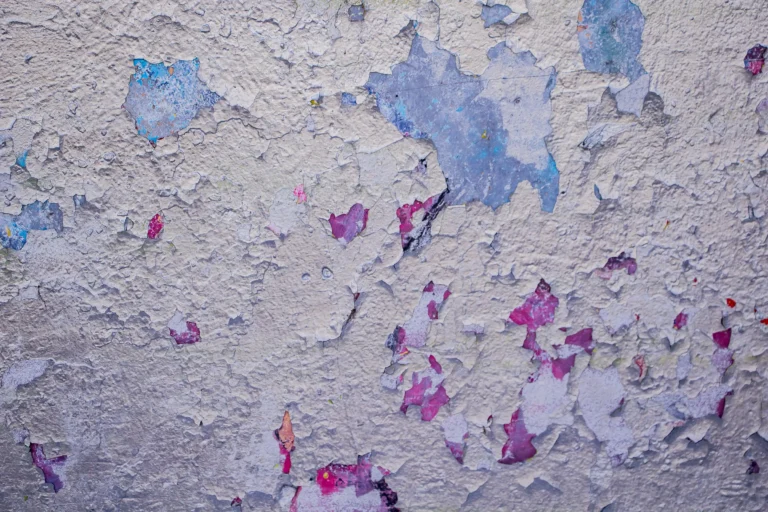Many homeowners find themselves asking why wall paint peeling off occurs, especially when the surface was painted only a few years ago. Peeling paint is more than just a cosmetic issue, it’s often a sign of underlying problems such as poor surface preparation, moisture, or incompatible materials. Understanding why paint loses adhesion and how to prevent it can save you time, money, and frustration. By addressing the cause early, you can maintain beautiful walls and protect your home’s interior or exterior for years.
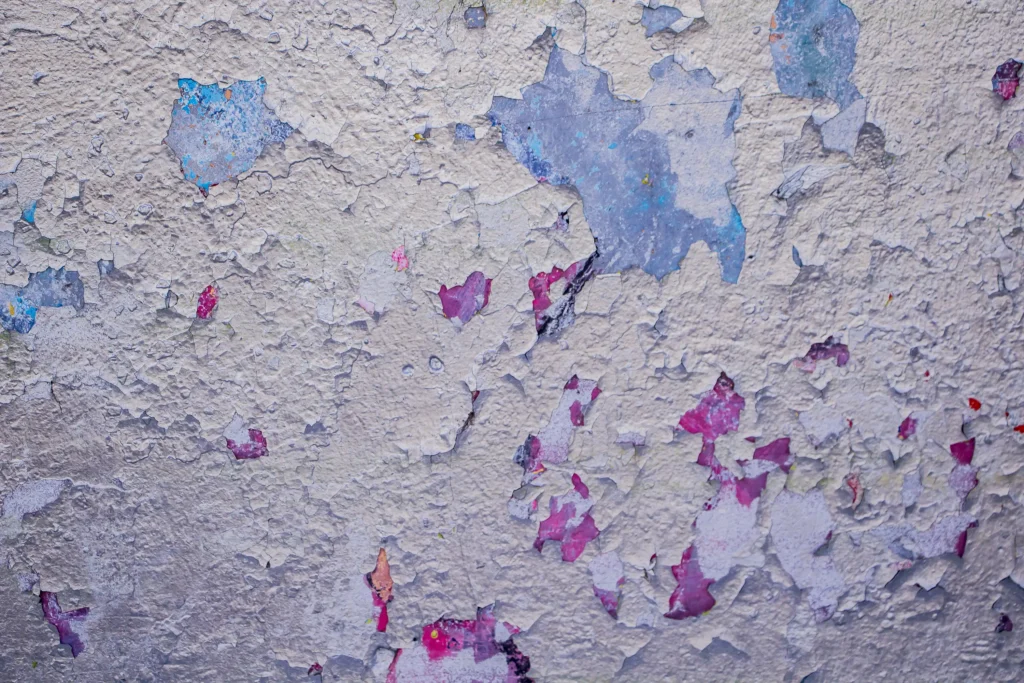
What Causes Wall Paint to Peel
Peeling paint happens when the bond between the paint and the wall weakens. The most common reason why wall paint peeling off occurs is poor surface preparation. If dirt, grease, or dust remain on the wall before painting, the new coat will struggle to stick properly. As the paint dries, it may lift and flake away, revealing the older layer underneath.
Another common cause is applying new paint over a surface that’s not completely dry. Moisture trapped beneath the paint layer prevents proper adhesion, eventually forcing the paint to bubble and peel. This can occur both indoors and outdoors, especially in humid climates or poorly ventilated spaces. Professional painters like those at Four Seasons Painting Co always ensure walls are clean and dry before painting begins to prevent these common issues.
Moisture and Humidity Problems
Excess moisture is one of the biggest reasons why wall paint peeling off becomes noticeable over time. In bathrooms, kitchens, or basements, condensation builds up easily. When paint is exposed to constant humidity, it loses its grip on the wall’s surface. Over time, this causes cracking and peeling that can spread across large areas.
Exterior paint is also vulnerable to moisture damage. Rain, dew, and snow can penetrate through cracks, especially if the paint was applied over unsealed wood or stucco. Once moisture seeps in, it pushes the paint outward. To prevent this, exterior walls should always be primed and sealed correctly before painting. Learn more about proper sealing and weather protection through Four Seasons Painting Co’s exterior painting services, designed specifically for Ohio’s changing weather conditions.
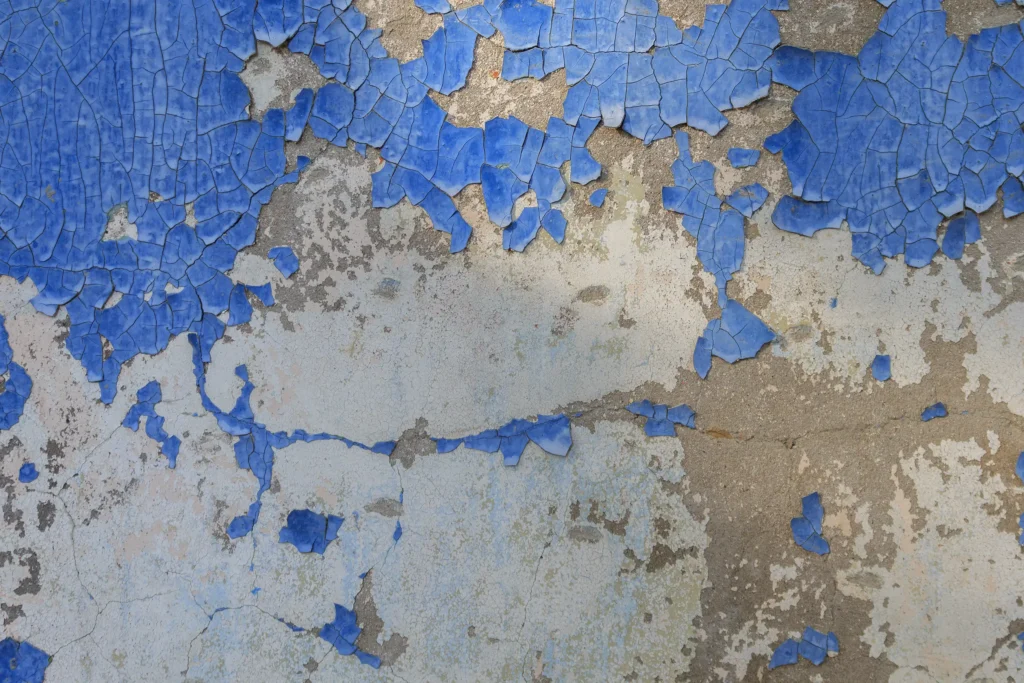
Poor Surface Preparation Before Painting
Many people underestimate the importance of preparation, but it’s one of the main reasons why wall paint peeling off occurs prematurely. Paint doesn’t adhere well to surfaces that are oily, dirty, or glossy. Failing to sand glossy walls or remove debris prevents the primer and paint from bonding securely. Even small dust particles can cause uneven adhesion that later results in peeling. Proper preparation involves cleaning walls thoroughly, repairing cracks, and applying primer suited for the surface type. Skipping primer is a common mistake that weakens the paint layer’s bond. Professionals at Four Seasons Painting Co never skip surface prep because it directly determines how long a finish will last. Clean, primed walls ensure a stronger, smoother, and longer-lasting coat of paint.
Using the Wrong Type of Paint
Using incompatible paint types is another frequent reason why wall paint peeling off occurs. For example, applying latex paint over oil-based paint without proper sanding or priming prevents adhesion. The flexible nature of latex causes it to pull away from the rigid oil layer beneath. This mismatch leads to cracking and peeling after a short time. To avoid this, identify the existing paint type before applying a new coat. Test a small area or use a reliable paint compatibility guide. You can learn more about paint types and their chemical properties on Wikipedia’s paint article. Always choose paint products that match the surface and environmental conditions for best results.
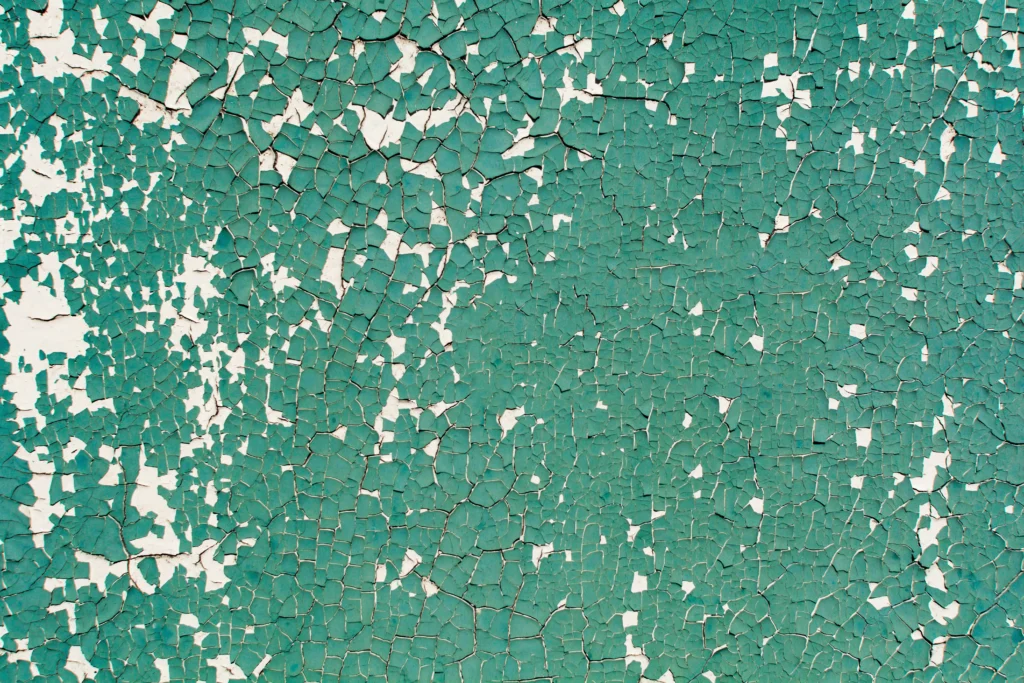
Environmental Conditions and Temperature
Extreme temperatures during painting can affect how paint dries and bonds. If paint is applied in cold or very humid weather, it may not cure properly. This leads to soft, tacky paint that peels easily once exposed to normal indoor temperatures. Similarly, painting in direct sunlight can cause paint to dry too fast on the surface, trapping uncured layers underneath that later separate and peel. When planning an exterior project, timing matters. Professional painters monitor weather forecasts carefully to choose ideal conditions for painting. For interior projects, maintaining good airflow and moderate temperature ensures even drying. The experienced team at Four Seasons Painting Co follows these practices to guarantee every coat adheres properly and lasts.
Moisture from Plumbing or Roof Leaks
Sometimes peeling paint isn’t caused by painting mistakes but by hidden leaks. Water from plumbing behind walls or from the roof above can soak into drywall or plaster. As the material becomes damp, it expands and breaks the paint’s adhesion. This type of damage often appears as large bubbles or peeling near ceilings and corners. If you notice recurring paint peeling in specific areas, check for leaks. Repairing water damage before repainting is crucial; otherwise, the new coat will fail again. A good rule is to address the source of moisture before any cosmetic fixes. In basements or bathrooms, using moisture-resistant paint can also help protect against future problems.
Skipping Primer or Using Poor-Quality Products
Primer acts as the bridge between the wall and the paint. Skipping it is one of the most common reasons why wall paint peeling off happens. Primer seals porous surfaces and helps paint adhere evenly. Without it, the topcoat may absorb unevenly or lift away when exposed to humidity. Using low-quality paint or primer can also cause peeling. Cheap products may not have enough binders or resins to grip the wall effectively. Investing in quality materials makes a noticeable difference in both appearance and longevity. Professionals at Four Seasons Painting Co always select premium paints and primers to ensure a durable and lasting finish that resists peeling and cracking.
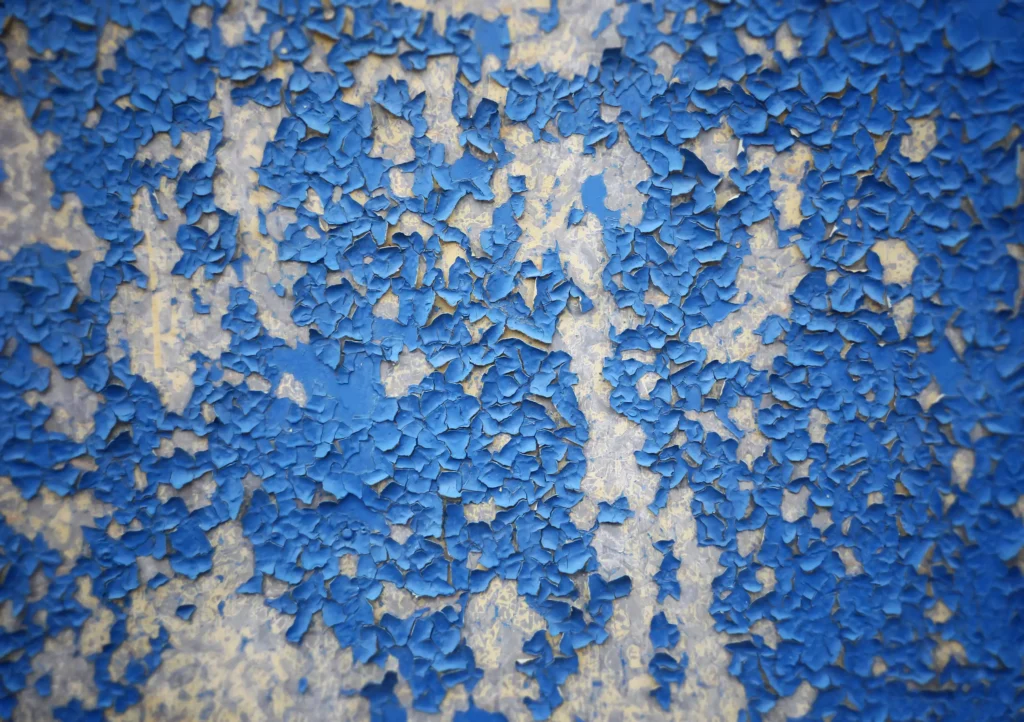
Painting Over Contaminated Surfaces
Walls exposed to smoke, grease, or mildew require deep cleaning before painting. If these contaminants remain, they interfere with paint adhesion. Kitchens and bathrooms are especially prone to this issue. In such environments, even high-quality paint can peel within months if the surface wasn’t properly cleaned and primed first. For cleaning tips and surface preparation advice, homeowners can refer to Forbes Home’s painting resource, which outlines steps to ensure proper adhesion and lasting results.
Old Paint Layers Reaching Their Limit
Paint doesn’t last forever. Over time, repeated painting without removing old layers can cause excessive buildup. As walls expand and contract with temperature changes, older paint layers may lose elasticity and start to separate. This is a natural reason why wall paint peeling off occurs in older homes, even when new paint is applied correctly. To fix this, loose paint should be scraped away completely, and the wall sanded smooth before repainting. Applying new paint over weak layers will only lead to future peeling. In some cases, a full repaint may be the best solution for a clean, durable surface.
How to Prevent Paint from Peeling in the Future
Prevention starts with proper preparation and product selection. Always clean and prime walls before applying paint, and allow adequate drying time between coats. Choose high-quality paints designed for your environment, moisture-resistant paints for bathrooms, UV-protected formulas for exteriors, and washable finishes for high-traffic areas. When you understand why wall paint peeling off happens, you can take proactive steps to avoid it next time. Consistent maintenance also helps. Inspect painted surfaces annually for early signs of bubbling or cracking. Quick touch-ups prevent minor issues from turning into widespread peeling. Professional painters offer inspection and maintenance services that keep your walls looking fresh for longer.

When to Call a Professional Painter
If peeling paint continues despite your efforts, it may be time to consult a professional. Professionals have the tools and expertise to identify hidden causes like water leaks or incompatible coatings. They can remove old layers safely, repair damage, and apply new paint that adheres properly. Learning why wall paint peeling off occurs is helpful, but sometimes solving it requires specialized skill and professional-grade materials. Hiring a trusted painting company ensures lasting results and saves time. Professionals can also recommend the right paint finish for each room based on light exposure, humidity, and surface type, preventing future problems from recurring.
Conclusion
Understanding why wall paint peeling off happens is the first step toward achieving durable, beautiful walls. Moisture, poor preparation, or using the wrong materials are often to blame, but with proper care, these problems can be avoided. By choosing the right primer, allowing paint to dry fully, and using quality products, your walls will maintain their finish for years.
For reliable painting services in Lake County, Ohio, Four Seasons Painting Co provides professional interior and exterior painting solutions. Their experienced team focuses on preparation, moisture control, and top-quality finishes that prevent peeling and extend the life of your paint. Visit the contact page to request a free quote and restore your walls with confidence.

